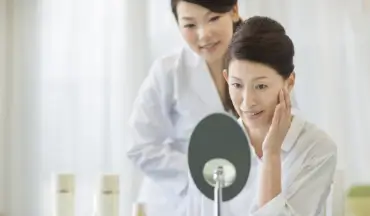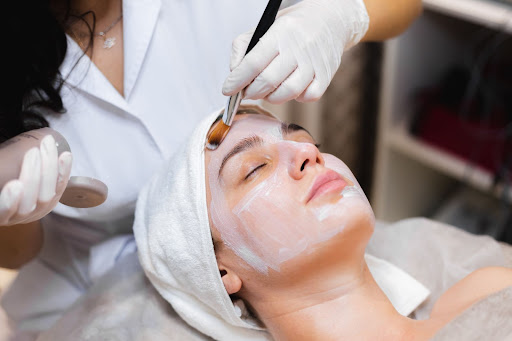What is a chemical peel?
A chemical peel is a form of cosmetic treatment where a chemical solution is applied to the skin to remove the top layers, allowing for smoother regenerated skin. This is done to treat several skin conditions.
Most chemical peels are performed as outpatient treatments and there are three depths of chemical peels to choose from.
What does a chemical peel help treat?
Certain skin conditions can benefit from a chemical peel. Chemical peels are also used to improve skin tone and texture.
Most commonly performed on your hands, neck or face; a chemical peel can help reduce or improve:
- A dull complexion, scaly patches and rough skin
- Fine lines and wrinkles around your eyes and mouth caused by ageing, sun damage and genetics
- Precancerous scaly spots, also known as actinic keratosis
- Certain types of acne
- Mild scarring
- Melasma, which are dark spots caused by pregnancy or taking birth control pills
- Freckles, liver spots, sun spots and uneven skin tone
The type of peel is determined after consulting with your dermatologist. The decision may differ depending on your skin’s condition and treatment goals.
Chemical peels don’t work well on sags, bulges, deep scars, deep facial lines and other more serious skin conditions. However, your skin doctor will advise you on the most effective treatment.
What is the difference between each type of chemical peel?
Light peel
A chemical solution containing salicylic acid is applied to the targeted area and treated with a cotton ball, gauze, or brush. There may be a slight stinging sensation as the skin begins to whiten. When the process is finished, the chemical solution is removed, or a neutralising solution is used.
Medium peel
Similar to the light peel, the chemical solution is applied to your face with a gauze, special sponge or cotton-tipped applicator. Trichloroacetic acid or glycolic acid might also be used. In some cases, a blue colour may be added to the trichloroacetic acid to obtain a blue peel. The blue peel will leave your skin with a blue tint that may last for several days if you have it.
Your doctor will apply a cool compress to the skin as the skin begins to lighten. You might feel a burning or sting on your face for up to 20 minutes. The nurses on duty may provide you with a hand-held fan to cool your skin but no neutralising solution is required.
If you have a light or medium peel, you may need to repeat the procedure to get the desired results.
Deep peel
You will be placed under sedation during a deep chemical peel. Phenol is applied to your skin by the doctor with a cotton-tipped applicator. As a result, your skin will turn white or grey. To reduce the amount of acid entering the skin, the procedure will be performed in 15-minute intervals.
Who should avoid chemical peel?
A chemical peel is not suitable for everyone. Your dermatologist may advise you against chemical peel treatments if you:
- Have taken oral acne medication like isotretinoin such as Myorisan, Claravis or others in the past six months
- Have a family or personal history of ridged areas caused by an overgrowth of scar tissue (keloids)
- Are pregnant
- Have frequent or severe cold sore outbreaks
What are the possible risks of a chemical peel?
Redness, stinging or burning, dryness and slight swelling are all common but brief side effects of a peel. You may also lose the ability to tan after a deep peel.
It is always best to consult your dermatologist before deciding on undergoing a chemical peel. With years of experience, our dermatologists at SKINCENTRIC at Bukit Tinggi Medical Centre (BTMC) will guide you through the process from the beginning to the end. Rest assured in the hands of trained professionals. You will get the best treatment plan that is safe for your skin.








